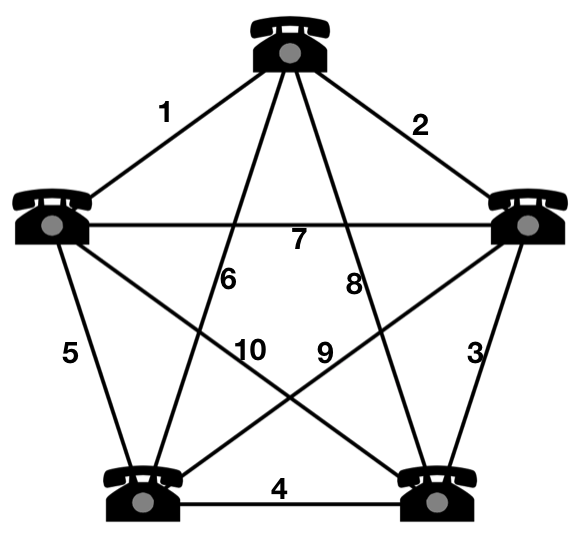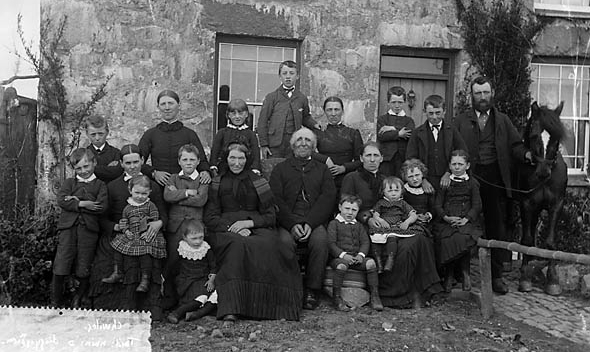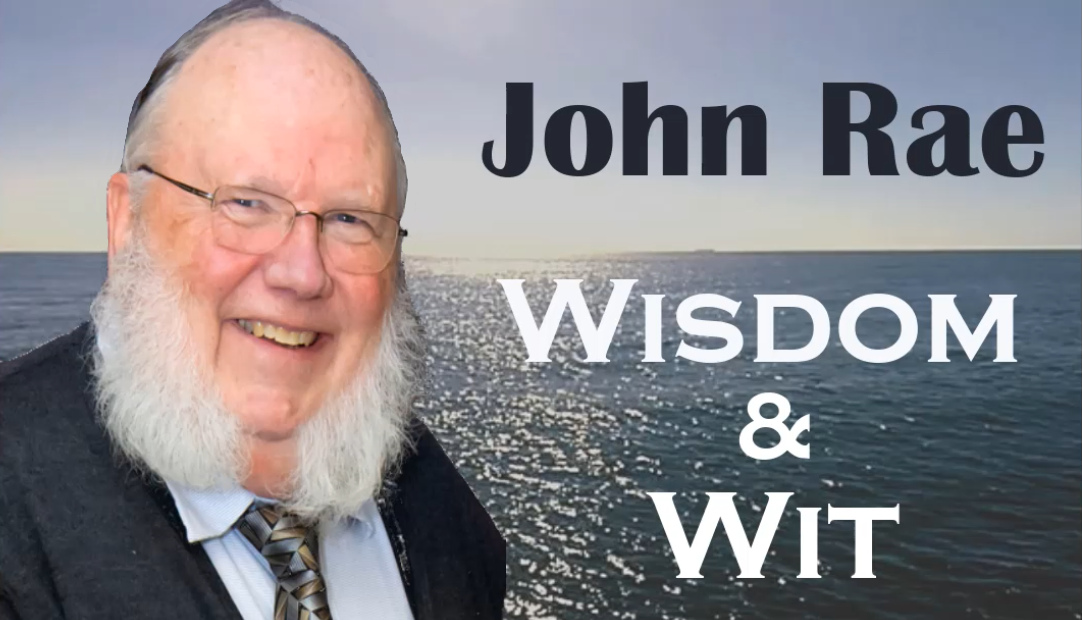Then God said, "Let us make man in our image, after our likeness; and let them have dominion over the fish of the sea, and over the birds of the air, and over the cattle, and over all the earth, and over every creeping thing that creeps upon the earth." So God created man in his own image, in the image of God he created him; male and female he created them. And God blessed them, and God said to them, "Be fruitful and multiply, and fill the earth and subdue it; and have dominion over the fish of the sea and over the birds of the air and over every living thing that moves upon the earth."
What happens when a husband and wife opt for a large family? Clearly as each child is born the family grows linearly. But the relationships and emotional connections do not. To explain let me digress...
 Any one who is in the I.T. business may be familiar with Metcalfe’s Law: Metcalfe’s law states that the value of a telecommunications network is proportional to the square of the number of connected users of the system ( n**2 ).[1] The actual equation is n x (n-1)/2, where "n" is the number of connected users. Metcalfe's Law does not only apply to a telecommunications network, it can also apply to a social network and explains why a video can go viral. You can see in Figure 1 that every telephone is connected to every other. Thus with a very large number of interconnected users, be it cell phones or a large Facebook group, it does not take long for everyone to find out about and share a popular video.
Any one who is in the I.T. business may be familiar with Metcalfe’s Law: Metcalfe’s law states that the value of a telecommunications network is proportional to the square of the number of connected users of the system ( n**2 ).[1] The actual equation is n x (n-1)/2, where "n" is the number of connected users. Metcalfe's Law does not only apply to a telecommunications network, it can also apply to a social network and explains why a video can go viral. You can see in Figure 1 that every telephone is connected to every other. Thus with a very large number of interconnected users, be it cell phones or a large Facebook group, it does not take long for everyone to find out about and share a popular video.
So there are five telephones in this figure, which means n = 5. Our equation tells us that there are 10 connections. 5x4/2 = 10. Furthermore, within a network each person, whether using a smartphone or Facebook page, has a unique key of some sort to allow other users to contact them - for example, a phone number. In this example there are 5 unique keys but 10 possible connections. One can think of each of these connections as a “conduit” or pathway. Communication can be initiated at either end of the conduit. For example, Jane can call/talk to Tom or Tom can call/talk to Jane - that’s 2 ways to interact through one conduit or connection. So while there are 10 connections between the phones there are 20 possible interactions enabled through them.
So what does this have to do with the family? The family is a social network with its own communication lines or “conduits”, so the same law applies. Let’s re-frame Metcalfe’s Law and compare the idea of a “connection” or “conduit” with “relationship”: The resilience and strength of a family is proportional to the square of the number of strong relationships (conduits) in it.
Think of a relationship as a kind of “conduit” that enables two way verbal and emotional communication between two people. I have purposely used the idea of a conduit, since it can join two points and it serves to convey something between them. In the case of a family, in every relationship, each person interacts, that is communicates, verbally and emotionally with the other. A relationship is, as the saying goes “a two way street” and just like a conduit, each relationship connects one person to another and enables one to initiate communication and the other to respond. So though there are n(n-1)/2 relationships (again think: “conduits”) in a family there are n(n-1) unique ways interactions can be initiated through verbal communication or by which emotions such as love can “flow”. As in our telephone example: The husband “Tom” and wife “Jane” have one relationship. But ether Tom can speak to Jane to say “I love you” or Jane can speak to Tom to say "I love you".
For each relationship to work well and have fruitful two way interactions there has to be a key within each person, enabling that connection - That key is a unique and personal love of one family member for each of the other members. Each relationship works best when it is based on love - which comes from the heart of each person and is directed towards the other. This unique love of one person for another is the key enabling an effective two way interaction within each relationship…just as the phone number is the key enabling two phone users to interact.
Figure 2 below shows a family of 4. One of the things I was taught in school was that to quickly figure out the number of squares in a table one need not count them. Simply multiply the number of rows by the number of columns. So here we can see the table containing the hearts is a 4 by 4 grid which contains 4 x 4 = 16 squares. However, we are only interested in the number of occupied squares. Note that the diagonal squares are empty, which would be the equivalent of deleting a row OR a column, so the number of squares containing hearts is actually 4 x (4-1) rather than 4 x 4. So using a table rather than the schematic in Figure 1 above more easily allows us to see why the term n x (n-1) is the main part of Metcalf’s law. (One cannot be connected to oneself, therefore the empty diagonals.)

Recall our terminology: a connection or relationship is a “conduit” allowing a two way interaction. Such as father to son being one interaction and son to father would be its compliment. Thus you can think of each square as an interaction. So in this table, row 3 column 1 shows a blue heart with a yellow outline - this is the father’s love for the first child. The compliment of this is the reverse of the row and column numbers: row 1 column 3. This square shows a yellow heart with a blue outline - the child’s love for the father. (Reversed colours: from blue/yellow to yellow/blue.) So in this table one can think of each row and column pair and its complement (eg row 1 column 3 and row 3 column 1) together as a relationship. And that is why we must half the term n x (n-1) to get the number of relationships as Metcalfe’s law predicts.
Therefore no two hearts have the same colour combination anywhere in the table because every one of the relationships in this family and the interactions within it are unique. Just as each phone in our network example has a unique key to allow it to be a part of the network, each of these hearts is a unique key in each individual allowing him/her to interact with the other family members. Put another way these hearts represent the sum total of the love in the family - the treasure of the family - the treasure each member stores up in heaven - a kind of spiritual bank account, in which out of one relationship two hearts are always involved.
Getting back to my original point, though the family size grows linearly with each new member, the number of relationships and thus the number of possible interactions and the love does not. They grow much faster. (Although practically speaking you cannot really quantify love!) With newly weds there is one relationship serving as a “conduit” allowing two interactions where the husband loves the wife and the wife loves the husband. If they go on to have two children the family size doubles to four as in Figure 2, but we see, using Metcalfes’ law, that there are now 4x3/2 = 6 relationships. However, that means there are now 12 unique interactions that happen, represented by 12 hearts in our table. Thus the number of relationships increases 6 fold and the love in the family 12 fold!
If you are wondering why I have such a large family in the lead image for this blog post (it may actually be an extended family), and show one in Figure 3 below it is because I saw a family of 13 attending a Holy Thursday mass in 2019. A family that size has quite an impressive social network. There are 78 relationships in that family holding it together allowing 156 unique interactions! That is a strong family. Note that not one of the 156 hearts is the same as another! So you can see how there is much wisdom in God's command to “be fruitful and multiply”.

During the 18th century Enlightenment, It was believed that societal flourishing could come about by Radical Autonomy, where there were no metaphysical bonds only freely entered “contractual” relationships with other radically autonomous entities. The family becomes “just” another possible “arrangement”. Now, in the 21st century, Post-Modernism Radical Autonomy becomes Radical Isolationism where we see ourselves as just bundles of “self interest” whose “rights” have to be respected by whatever coercion is necessary. Others exist primarily to serve one's will. In this isolationism there are to return to our telephone metaphor, no phone lines or phone numbers, only isolated telephones, ringing off the hook for attention. The fruitfulness of the family and the inherent strengths in it have been lost and forgotten.
Clearly the family is much more that this modern view. In a family we have the “metaphysical bond” of being parents or brothers or sisters. Our uniqueness and autonomy is built on sharing a similar pool of spiritual, physical, and social DNA. That uniqueness can only be brought to light and life in give and take relationships with others, not as isolated self reliant units.
What kind of family do you prefer?
Acknowledgements to David Palmer for his reviews and layout suggestions and John Rae for his usual wisdom and guidance in helping me come up with a more intelligible version of this post.
Blog lead photo credit: The National Library of Wales.
References:
1. Wikipedia





